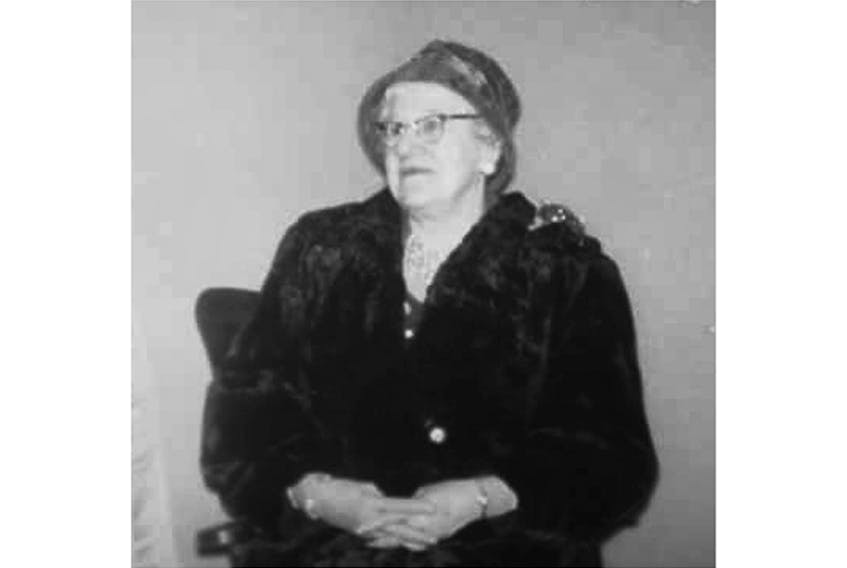In December 1917, during the First World War, Halifax harbour was a busy place. The Bedford Basin was the location of convoys of merchant ships that were taking supplies overseas to the soldiers in Europe. One of the ships in the port was the Norwegian vessel Imo, which was en route from Halifax to New York to pick up relief supplies going to Belgium. Also in port was the French munitions ship Mont-Blanc, which was filled with tons of benzol, highly explosive picric acid, TNT and gun cotton.
On the morning of Dec. 6, 1917, the Imo was departing the harbour. At the same time, the Mont-Blanc was proceeding into Halifax harbour on its way to the Bedford Basin. It was at the narrowest part of the harbour that the ships met. The Imo was travelling on the wrong side of the harbour for outgoing vessels and it struck the Mont-Blanc. The two ships eventually parted, leaving a huge gash in the hull of the Mont-Blanc. This created sparks that ignited the picric acid on the vessel.
The collision caused a fire on the Mont-Blanc and it burned for about 20 minutes. At 9:04 a.m., the ship exploded and caused unimaginable devastation in the city. A violent tsunami followed that affected both Dartmouth and Halifax. It was a day that would never be forgotten.
This disaster remained the largest man-made explosion in history until the detonation of the atomic bomb in 1945.
The statistics from the Halifax explosion were unbelievable. About 1,600 people were killed instantly and almost 400 died from their injuries in the days that followed. There were 9,000 people who suffered injuries and many were blinded. Approximately 1,500 buildings were destroyed and another 12,000 were damaged. Nearly 25,000 people were left homeless or lacked proper shelter. It was thought that the damages to property totalled about $35 million.
All of this tragedy was made even worse when Halifax was hit with a terrible blizzard the day after the explosion.

Queens County people impacted
Although the explosion and devastation happened many miles from Queens County, there were families in our county who were affected.
Harold Winters of Liverpool, his wife Gertrude and son Mervin were living in Halifax in 1917. Their Halifax home was completely destroyed but somehow they managed to survive. The day after the explosion, the Winters family arrived in Liverpool. Mrs. Winters was very badly cut and Dr. Hennigar of Liverpool dressed the wounds. Lots of stitches were needed. Harold Winters suffered many cuts to his face and lost a leg in the blast. The family not only lost their home in the disaster but everything they owned.
As well, the family of Captain Joseph Evans in Liverpool suffered a huge loss. He was on board the schooner, St. Bernard, in Halifax harbour when the blast occurred. The vessel had the misfortune to be tied up at Pier 6 on the morning of the explosion and the burning munitions ship, Mont-Blanc, drifted into Pier 6. The crew of the St. Bernard was last seen desperately trying to untie their lines to get away from the wharf. The schooner was completely destroyed and little remained, except for a few pieces of her keel that were found on top of the wreckage at Pier 6. Capt. Evans was reported missing after the explosion but his body and the bodies of the other crewmembers were eventually found. His remains were identified at the Chebucto Morgue in Halifax and then brought by train to Liverpool. He was buried in the Methodist Cemetery, now the United West Cemetery, on Payzant Street.
His obituary says he was an honest and industrious man and had followed the sea and was a Master Seaman out of Liverpool for a number of years. He was very popular with his employers and was a member of the I.O.O.F. He left behind a wife, three sons and two daughters. Captain Joseph Evans was only 52 years old. Descendants of Captain Joseph Evans still reside in the Liverpool area, including his granddaughter, Rita Dagley.
Miss Janet Glode of Milton was also a fatality that December morning. Her remains were identified at the Chebucto Morgue in Halifax. Miss Glode was unmarried and was only 33 years old. She was buried in St. Peter’s Cemetery in Dartmouth.
Neva Richardson, wife of Private Victor Richardson, was also killed in the blast. They lived at 9 Needham St. in Halifax in 1917. Neva was the daughter of Samuel Dukeshire of Maitland (now called Maitland Bridge), Annapolis County. Her body was brought from Halifax by train to Caledonia on Dec. 10, 1917. The burial was in Maitland. She was only 21.

Many missing
With the city of Halifax being in ruins, there were official lists of those people who were missing. On the list were Edmund O’Grady and his wife. Mr. O’Grady was a son of Thomas O’Grady of West Caledonia, Queens County. Edmund’s son, James O’Grady, was a fireman on the Intercolonial Railway in Halifax and was out on a run when the explosion occurred. He survived and hoped that his wife and child had survived. The family lived at 32 Hanover St. and the Liverpool Advance reported that the family’s home was completely destroyed and everything was lost. No trace of his family was found. Later, the remains of his wife, Ellen, who was 26, were identified at the morgue. Their two-year-old child, Dorothy, also died that morning. They were buried in New Germany.
When I was growing up in Milton, my neighbour, Mrs. Marjorie Stewart of West Street, often talked about the Halifax Explosion. It was something that she had personally witnessed. She was originally Marjorie Streeter from Halifax and lived in the North End of the city with her parents and siblings. She was twelve years old at the time and that morning, she was in school when the ships collided. Their school was destroyed and she was hit by flying glass and debris. Some of her school friends did not survive, but she did. She suffered many injuries and lost an eye and one of her little fingers. She remembered people had suffered serious injuries, many lost limbs and those who were not killed were in very critical condition. People were trapped under debris. She recalled hearing the cries and moans from the injured who were in desperate need of medical attention. Her family’s home was destroyed, but miraculously, everyone in her family survived.
This year marks the 100th anniversary of the Halifax Explosion. Let us all take a moment to remember the many people who perished and those whose lives were changed forever because of this great tragedy.
Tim can be reached at [email protected]









